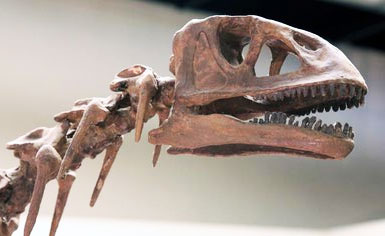The Isanosaurus is the only one known species which has the following automorphies, they have a neck vertebra also a back vertebra and also fragments of second and sixth tail vertebra, two chevrons known to be the bones, some fragmentary ribs, also the right side of the sternal plate, the right side shoulder blade, and the thigh bones left part. The animal is estimated to have a length of 6.5 meters approximately while living; the thigh bones measurement totals up to 76 cm length wise. Later was seen that the vertebral neural arches were differentiated from that of the vertebral centra part thus proving that there was not joint between them and estimated that the animal was not a fully mature one.

The sauropodomorphs showed a bipedal locomotion in the early days but the Isanosaurus though being the foremost sauropod ever to be known is a quadrapedal, the legs having column like arrangement proved by the tough and also a straight thigh bone also considering the prosauropods and also the Antetonitrus which comes under the sauropods have a thigh bone which is sigmoidal in shape, similar to many sauropods the femurs bony process is small size wise another major feature showed that the lesser trochanter was completely missing.
There are also other prominent autamorpic traits which is visible in the vertebrae, the neck's vertebrae has an unique opisthocoelous vertebrae which leads in the formation of ball-and-socket fusion together with the surrounding vertebrae talking about their tail's vertebrae they are amphicoelous in nature, the animals posterior neural are generally high similar to that of the lately found sauropods, but not in resemblance with the prosauropod having neural spines which are low. The ends of the vertebrae's sides are generally concave but do not have deep openings similar to that of the saurapods found recently.
| Isanosaurus facts: | ||||||||
|
||||||||